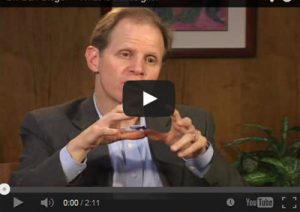Don’t Give Up Hope: Using Acceptance & Enthusiasm to Heal Our Troubled World
 I’m sure people from every generation have felt this way, but I’m worried. From my perspective, the state of the world is troubled. It feels worse to me than any other point I can remember. Even setting aside the menace of climate change, headlines are frightening. Animosity and violence are looming large. More than ever, it feels like people are taking sides and pointing fingers rather than working together to find solutions. Trust, security, good will… are they relics of past generations? Are things really going downhill… for good?
I’m sure people from every generation have felt this way, but I’m worried. From my perspective, the state of the world is troubled. It feels worse to me than any other point I can remember. Even setting aside the menace of climate change, headlines are frightening. Animosity and violence are looming large. More than ever, it feels like people are taking sides and pointing fingers rather than working together to find solutions. Trust, security, good will… are they relics of past generations? Are things really going downhill… for good?
When I ponder the way the world looks right now, my mind travels back to the unforgettable experience of Barry Neill and Samahria Lyte Kaufman and their son’s complete emergence from Autism in the 1970s. What does this have to do with the state of our society? I’ll get to that…
After reading the Kaufmans’ book, Sonrise:The Miracle Continues, in 1993, I was so moved by their groundbreaking work with autistic children that I left my home in California to volunteer at their Center in the Berkshire Mountains. I got to know them and to see the dynamics of their method up close. One aspect of their real-life drama gives me some hope about where we are now.
The Kaufman’s remarkable story was also made into a television movie, Son-Rise: A Miracle of Love. I will briefly summarize: When the Kaufman’s son, Raun, was four weeks old, he developed an ear infection. He was treated with antibiotics, but had a severe dehydration reaction and was hospitalized, near death. After Raun recovered, his development seemed normal; he smiled, played, laughed and enjoyed affection. But when he was a year old, his behavior began to change. His parents observed helplessly that Raun became less sensitive to sounds and seemed increasingly aloof. He pushed away their attempts to embrace him, preferring to be alone and to focus on objects. He began to adopt other behaviors, like rocking back and forth, and flapping his hands while spinning plates. As Raun’s father put it “He played hypnotically with inanimate objects while ignoring, even avoiding, people.”
The Kaufmans embarked on a wide-spanning search for answers, studying volumes of research on autism and consulting specialists. After exhausting every avenue they could find, the Kaufmans were left with the diagnosis that Raun was severely autistic and had a cripplingly low IQ. The experts predicted that he would never speak and that when he was older, he might be trained through behavior modification to comb his own hair or brush his teeth, but that was the outside of what could be hoped for.
Before Raun’s illness, the Kaufmans had been exploring personal growth with a group of friends and fellow-seekers. They used a Socratic form of questioning, which they called the “Option” method, to explore reactions and feelings in order to gain mastery over their attitudes. So when Barry (nicknamed “Bears” by his family) and Samahria were told their son’s diagnosis was a “tragedy,” they didn’t accept it as such. The process of questioning their thoughts and assumptions was deeply ingrained already, so they naturally applied it to their new circumstances. Yes, Raun’s illness and new behaviors were real and very challenging, but the Kaufmans decided not to assume that this was “unfortunate” and something to resist. Instead they got to work and used the Option method to address their thoughts and feelings about Raun’s situation.
When Raun was 18 months old, without a roadmap, Bears and Samahria set out to reach him, from the place of non-judgment. They decided if Raun “couldn’t follow us, we wanted to follow him.” In the spirit of curiosity and openness, the Kaufmans began a weeks-long observation of every nuance of Raun’s behavior. As they did, bringing curiosity and fascination to their daily observation, “We found our love increased with each passing week as we grew infinitely more respectful of his dignity and specialness.” From this profound respect for the mystery of Raun’s world, their project was born. They would join him. When he spun plates, his parents and sisters got down on the ground and spun plates too. The key – which they intuited to be most important – was that in addition to joining the activity, they brought a full-hearted acceptance of Raun, exactly as he was. After 11 days, a single sideways glance at his mother from Raun was a cherished gift that motivated them further.
Over the weeks, they expanded from joining to also “inviting.” They found creative ways to expose Raun to touching and looking at their faces. Soon Bears and Samahria enlisted the help of friends, family members, and even enthusiastic college interns.
Despite warnings from medical experts that joining Raun in his autistic behaviors would reinforce those behaviors, the Kaufmans invested in the process. Their team worked 12 hours a day, 7 days a week in a “program of sensory enrichment and stimulation.” The hallmark of this project was the gloriously accepting energy that Bears and Samahria trail-blazed. They invented ways to let Raun feel in control in any given moment. A congruent discovery they made was that their special child reacted as much or more to the inner attitude of volunteers than to the activities happening outwardly. One well-meaning volunteer had to withdraw from rotation because she harbored self-doubt and expectations, and Raun responded uncomfortably to her every time she was in the room. This woman’s inner pressure to do things “right” kept her from being fully available and accepting. The quality of non-judgmental presence was the foundation of everything.
The details of the Kaufmans’ project with Raun were stunning and you can read about them in awe-inspiring, tear-jerking specificity in Kaufman’s book, Sonrise, The Miracle Continues. I will cut to the chase and tell you that after 15 weeks in his parents’ creative program, Raun had defied all predictions. He was enjoying play and affection, making lots of quality eye contact, was receptive to communication, used a few words and spent much less time engaged in the self-stimulating autistic behaviors.
The team was exhilarated by their steady progress, but then something changed. Raun began to regress. Over the next few weeks, he grew unruly, erratic and unpredictable. He became reclusive, spending more time in his self-stimulating behaviors. His family struggled to understand and adapt. One morning when Samahria picked Raun up from his crib, his arms hung limp. She brought him into the kitchen and the family watched as Raun launched into a spinning and flapping event which fixated him entirely. His eye contact was gone and his “isms” were back with an intensity that shocked them. “He seemed more profoundly autistic and more unavailable than ever before.”
This, you might think, was certainly tragic. Though they reckoned with the sadness of losing contact with their son, Samahria and Bears still didn’t label this development negatively. Their whole approach with Raun was based on the “option” orientation, the “yes, and,” a blend of surrendered acceptance and joyful enthusiasm. They simply started over. They didn’t ask “what did we do wrong?” They got present with their son, where he was, accepted him and followed his movements. They even chose to be excited and enthusiastic, just like before.
Nine days into the restart, Samahria went to get Raun in the morning. When she approached his crib, he looked up at her. She smiled and kissed his hand. He reached up and touched her nose. They cuddled and giggled, and Samahria’s laughter turned into sobbing. The whole family rejoiced. Raun was back, this time for good. He began to use words with a whole new momentum. From that day on, he progressed by leaps and bounds.
By the time Raun was 4-1/2, he entered preschool as a “normal” child. As Raun himself puts it in his book Autism Breakthrough, “I recovered completely from my autism, without any trace of my former condition.” He went on to be an excellent student, a loving friend, son and brother. Raun measured a near-genius IQ, graduated from Brown University and went to work helping families with autistic children of their own. I had the pleasure of meeting Raun and working with him when he was a young adult. I found him to be memorably kind, attentive, playful and generous. He is now the Director of Global Education for The Option Institute and writes about his life before and after his parents’ intervention in his book. You can see photos of Raun as a child and as an adult here.
Raun’s story seems miraculous, but I believe his healing was scientific and that its source was human energy. I believe the incredible combination of acceptance and enthusiastic, inviting energy the Kaufmans generated was irresistible. Bears theorized that Raun’s brain must have forged new neuropathways out of sheer desire. In other words, his desire to say YES to the exquisite invitation to play and connect that his parents orchestrated through their massive, loving volunteer effort, changed his brain. Now, decades later the human brain’s plasticity is common knowledge because of cascading neuroscientific breakthroughs in the 2000’s. Norman Doidge’s seminal book How the Brain Changes Itself was the first of many books that support the Kaufmans’ idea of a changing brain. Without foreknowledge of cutting edge brain science that would emerge, Bears and Samahria used it anyway. And since that ‘miraculous’ time, they have devoted their lives to helping other families and individuals from all over the world experience healing and transformation through the Autism Treatment Center of America.
I’m not a mental health expert, and I don’t wish to diminish any other approach to autism, or shame any parents who have not had this type of experience with their autistic children. The Kaufmans were fortunate to have the time and resources to orchestrate this phenomenal experiment. I had the privilege of witnessing their work over the years, and it informed me as a person. It changed my life. That being said, allow me to dip back into their inspiration to generate a little hope for us now.
I keep thinking about that pivotal time when, after months of astounding and joyful progress, Raun regressed. On the surface, it must have looked like all was lost, like they were going backward. But Raun’s family refused to see it that way. They simply got back to work. In retrospect, Bears and Samahria surmised that Raun must have needed that step back. He wasn’t ready to emerge completely into our world until he submerged himself in his insular behaviors one more time.
Are you seeing my parallels? Do you get where I’m going with this? As a society, we have made incredible social strides just in my lifetime. For example, when I was growing up in the 70’s, shock and whispers still accompanied the revelation that someone was gay. Fast forward to 2015… the Supreme Court legalizes gay marriage. Now people who openly identify as LGBTQ are in leadership positions across every sector of America. Another example: When I was born, the Civil Rights Act didn’t exist; segregation was normal and racial discrimination was legal. Cut to 2008…I’m standing in a Las Vegas ballroom watching as Barack Obama is declared President-elect of the United States. And then there’s technology. When I was a kid, my world mostly existed inside a five mile radius that included my home, my school, the grocery store, our church and about 12 friends on my street. Now through technology and media, 7 billion people are my neighbors. I’m often overwhelmed by the volume of information and the number of choices I have in any given moment.
Could it be that our relatively speedy progress is too much for the sum total of us to digest all at once? Is our society going back to submerge itself in insular (defensive) behaviors temporarily? Could we actually be on the verge of progressing, as a people, to a brighter, more humane, less violent consciousness for real and for good?
Obviously my theory is poetic, not academic and, of course, if I stick with the analogy of the Kaufmans’ story, it would be counter-productive to expect that things will get all the way better; that we will “come out of this.” The Kaufmans didn’t have an agenda. They just had a deep desire to reach their son. They were engaged in a fulfilling and blissful journey; they weren’t focused on a destination.
Even though I’m making up the analogy, maybe it’s useful. Perhaps if I apply the Kaufman’s approach to a society that’s seemingly in regression, I can be more useful to said society. If I adopt their model of acceptance and apply it to society, I can stop wasting my energy resenting the way it is and looking for people to blame , and I can look for ways to help it.
How about enthusiasm? If I use that principle, maybe I summon my best, excited, creative energy and apply it to finding solutions to problems in my own community and family, knowing that my small sphere of influence is part of society.
It is human nature (and understandable) to react and adapt negatively to the circumstances around us. But we humans also have the ability to GENERATE and CHOOSE our focus. Maybe this time in history is an opportunity to practice that. Eckhart Tolle tweeted in 2017, “The arising of the new consciousness is why we are here.” Maybe what’s happening in the world around us right now is helping us to develop, even transform, ourselves into the people who bring about a new consciousness.
If I stick with the Kaufmans’ example, one thing is certain: I can’t fake it. All the do-gooding in the world won’t make things better if I harbor judgments about myself and others. The foundation of non-judgmental presence is everything. The Kaufmans used the Option method to get to that judgment-less place, but there are many paths to letting go of judgments. A simple mindfulness practice a few minutes a day is one way. A fantastic benefit of technology is that mindfulness teachers like Jon Kabat-Zinn and Elisha Goldstein have lots of free instruction on YouTube. Many resources for starting a mindfulness practice can be found here as well.
The bottom line is this: We get to choose how we respond to the circumstances around us. When faced with the greatest obstacle to their life plans, the Kaufmans found their inner brilliance. They weren’t experts but their desire to reach their son, along with their commitment to personal growth, brought about a new paradigm that has helped thousands of families in the decades since. It wasn’t easy, but what the Kaufmans did was simple, in a way. They decided who they were going to BE in relation to their son and their actions poured forth from there. We all get to choose who we want to be.
I can’t control my 7 billion neighbors but I want to BE someone who brings accepting and inviting energy. I don’t know what results it will produce around me, if any, but being accepting is worth doing for its own sake. It feels good. Want to join me on a blissful journey to reach each other? What have we got to lose?
Tags: autism, autistic child, communication, hope, psychological advice, society2 Comments
Comments are closed.









There’s evidence to suggest that the quality of the gut bacteria colony can be a cause of some forms of autism. This may have been the cause for Raun & might have corrected naturally.
Beautiful, mindful post – thank you.
(And to the gentleman who wrote about gut bacteria, I assume because he rightly picked up on the early antibiotic use, the two are not mutually exclusive. Having accepted and joined their son so fully, these parents created a virtually stress-less waking environment for him – during which is body and brain would be able to heal. Since we know the microbiome is sensitive to various kinds of environmental factors, this could have been but one of many biological pathways by which Raun was able to resume a healthy developmental trajectory.)